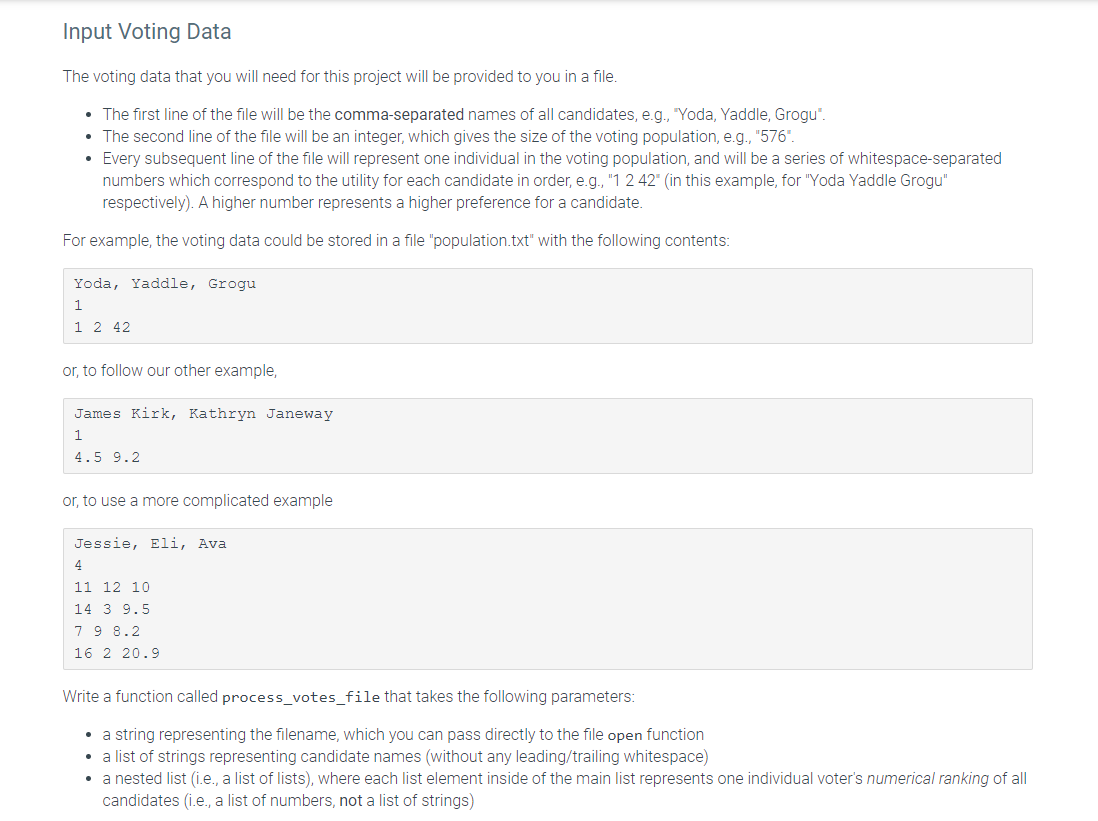Question
Using Python 3 To represent a voting system, you will need to write multiple functions. You have starter code for each of them. Here are
Using Python 3
To represent a voting system, you will need to write multiple functions. You have starter code for each of them.
Here are the functions that you will need to implement for each system.
- single_vote_X(candidates, preferences)
- aggregate_votes_X(vote_list), where X will be replaced by the name of the appropriate voting system.
Each single_vote function takes in two arguments: a list of the candidates' names and a list with the utility for each candidate (floating-point numbers), and calculates the vote that this individual voter will cast by returning the name of the candidate under the requested voting system. If the number of candidates doesn't match the number of preferences, the function should return None.
Each aggregate_votes function takes in as an argument a list of all voters' votes (i.e., a list of names). The vote will be different types depending on the system, but whatever type it is, a list of all the votes is provided to the aggregate_votes function, which must calculate the true winner of the election according to the voting system. Again, the method of counting will vary, but the return value should be a single string, representing the winning candidate. Hint: A dictionary would make it straightforward for you to keep track of the score for each candidate. Using dictionary's .get method would help determine if the value has already been added.
If a tie occurs (i.e., more than one candidate has the same scoreumber of votes), then pay attention to the instruction on how to resolve them.
Step by Step Solution
There are 3 Steps involved in it
Step: 1

Get Instant Access to Expert-Tailored Solutions
See step-by-step solutions with expert insights and AI powered tools for academic success
Step: 2

Step: 3

Ace Your Homework with AI
Get the answers you need in no time with our AI-driven, step-by-step assistance
Get Started


